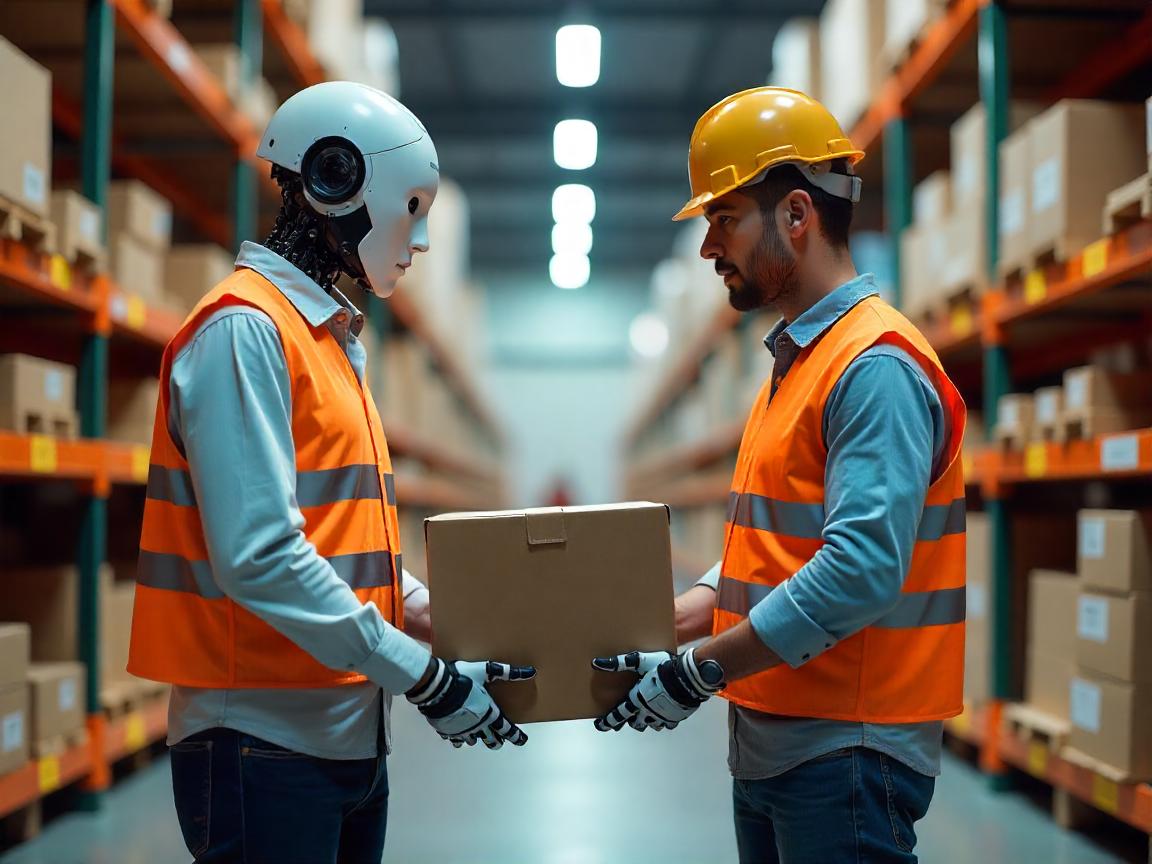
The Rise of Humanoid Robots in Warehousing
Humanoid Robots in Warehouses: Think of entering a busy warehouse where robots, made to resemble humans, smoothly move through the rooms, lift boxes and work together with people. What was once expected at some time far ahead, is now upon us. Using Digit and Optimus in their workforce, companies are managing tasks that are repetitive or dangerous which increases how fast and accurately orders are filled.
They are much more than just cost-cutters; they form part of a wider effort to shape new ways of working. Because robots are now assisting with tough warehouse activities, this allows humans to focus on other duties and helps make the job safer, something that was rare just some years ago.
Prioritizing Safety in Human-Robot Collaboration
Since robots are working more closely with people, safety becomes very important. Smart wearables such as tech vests are now being used in companies so robots can avoid hitting people. Even standards set worldwide are raising their expectations for the safe use of robots at workplaces.
This is not only about safety for people’s bodies—these steps help lower stress levels and allow humans to partner well with machines. Experience from past situations now guides us to ensure that people and industrial robots can achieve safety and effectiveness in their shared workplaces.
The Human Impact: Job Displacement and Workforce Evolution
It is normal for people to worry about robots stealing their jobs. Evidence points to automation transforming the work world for many people in the coming decade. Importantly, the subject is about jobs being changed and improved, not just about them being lost.
Many warehouses are supporting workers by showing them how to work safely around and supervise the robots in their area. There are also consequences for people. If there are many robots, some employees tell us they feel greater stress and feel less involved in their responsibilities. Blending technology with the way employees interact at work can make employees engaged and valued during this new period controlled by robots.
Robotics-as-a-Service (RaaS) is an Example of Adopting the Subscription Model.
A major change is the new approaches companies are adopting to finance their robot purchases. Many companies now opt for subscription services instead of making large upfront payments, using something called Robotics-as-a-Service (RaaS). Companies can now rent or lease robots, just as they might rent or lease software.
Flexibility has allowed mid-sized businesses to save money while becoming more efficient. Thanks to SaaS, companies don’t have to have a large budget to use advanced automation. The result? More industries are able to use and improve their cloud resources quickly.
Experts Say: Managing Innovation and Values Together
Experts in the industry believe that we have to adapt how we organize warehouse work for humanoid robots to succeed. Robots should not substitute humans, they should simply assist them in their work. Humans and robots should work as a team, with humans supervising and managing and robots doing the routine jobs.
As a result, feelings change: robots are meant to assist humans, not take over their jobs. The main point is to ensure that jobs open to both humans and machines concentrate on innovation and human dignity, improving all capabilities of their workers.
Summary: Looking Ahead in Warehousing
The presence of humanoid robots in warehouses is welcoming the next industrial era. Logistics is being transformed rapidly and positively by efficiency, safety and flexibility. Even so, we can see that the technology alone won’t make this change permanent.
By ensuring workers are safe, supported and gave options like Robotics as a Service, we’re building the path for humans and robots to cooperate more closely. Finding the right balance between modernization and human values is important to benefit everyone in today’s warehouses.